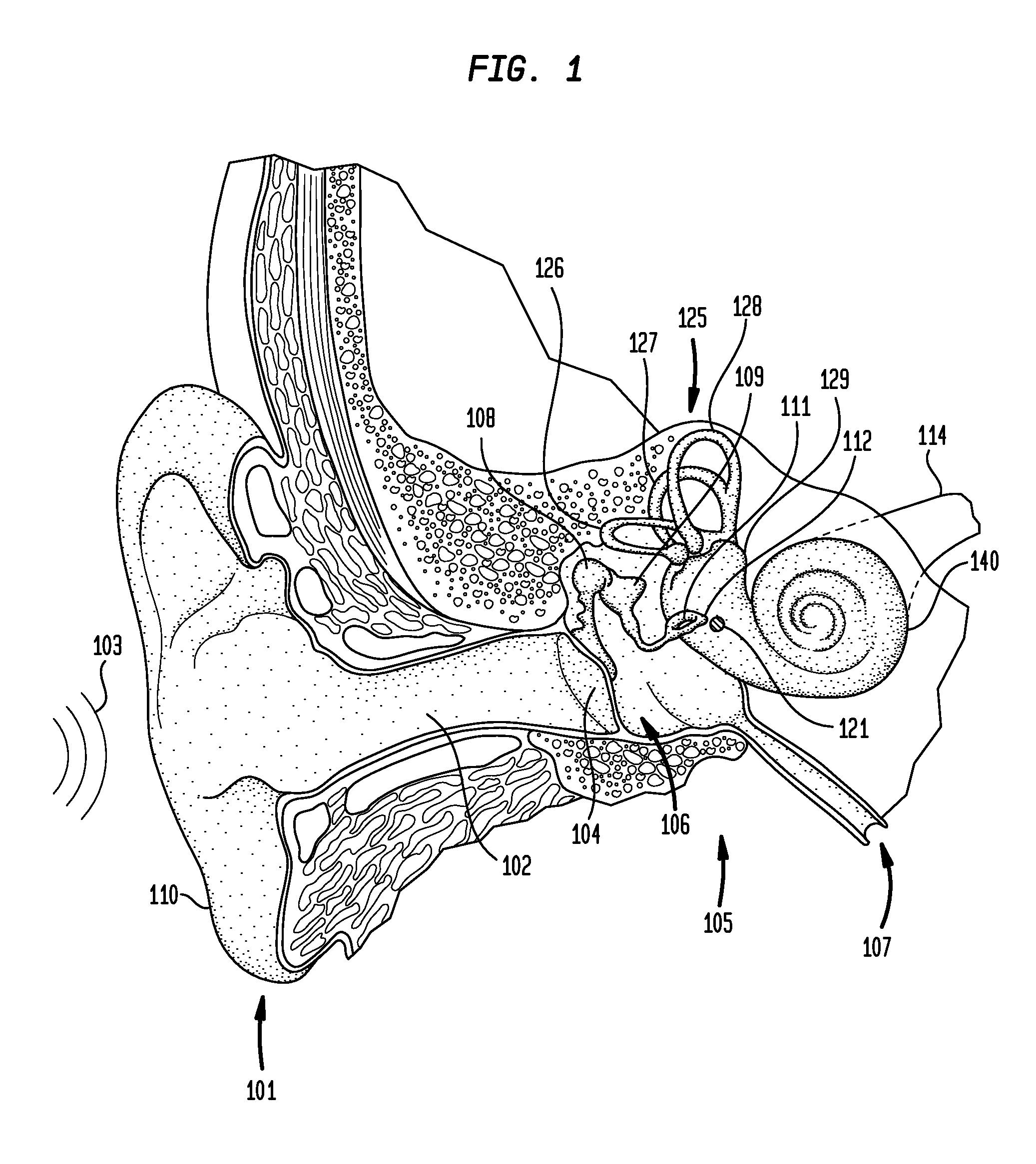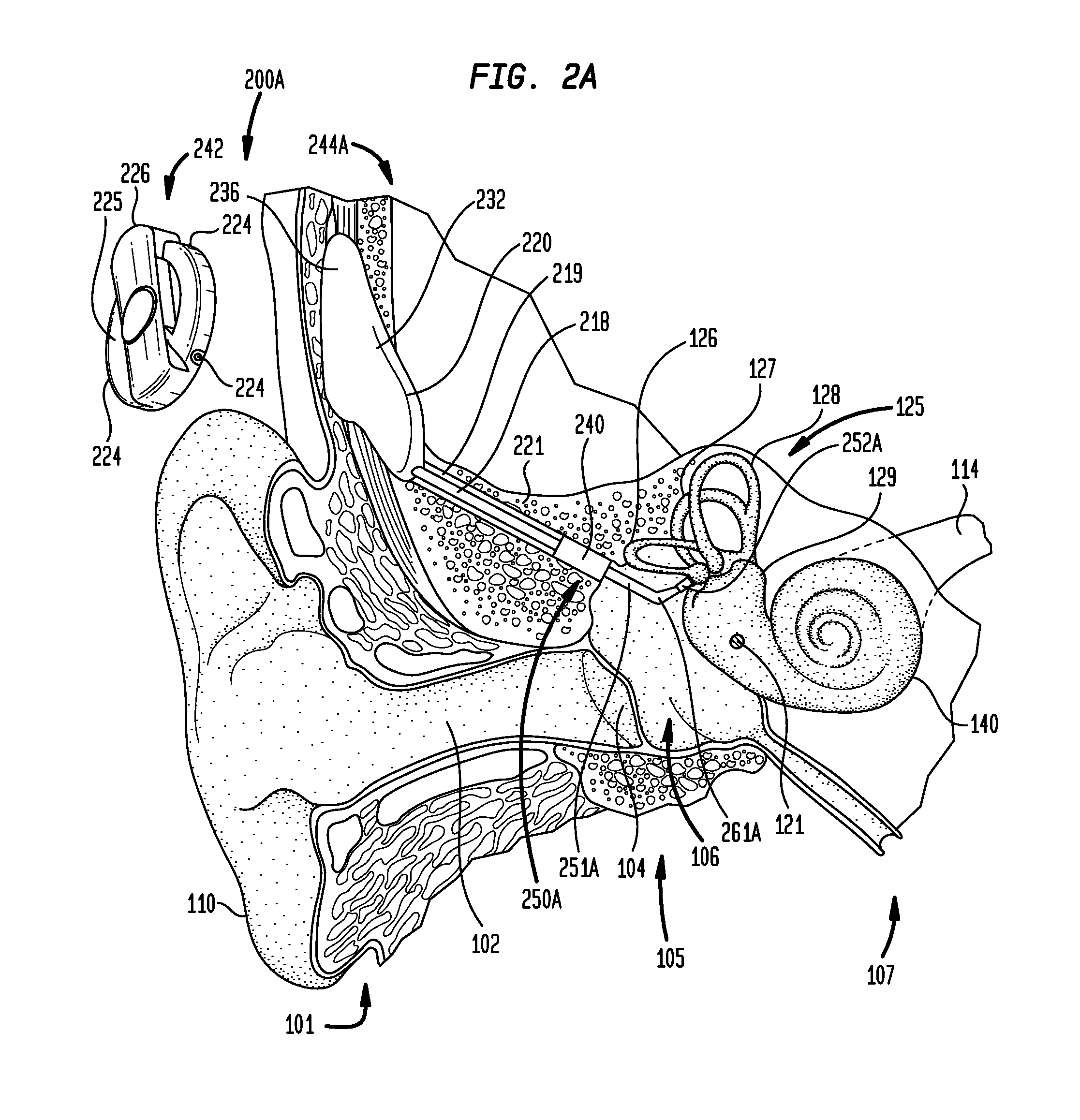Implantation of a hearing prosthesis
a technology for hearing prostheses and implants, which is applied in the field of hearing prostheses, can solve the problems of conductive hearing loss, impeded natural mechanical pathways that provide sound in the form of mechanical energy to the cochlea, and not all individuals suffering from conductive hearing loss are able to derive suitable benefits from hearing aids
- Summary
- Abstract
- Description
- Claims
- Application Information
AI Technical Summary
Benefits of technology
Problems solved by technology
Method used
Image
Examples
Embodiment Construction
[0025]Aspects of the present invention are generally directed to implanting a component of a hearing prosthesis in a middle ear cavity of a recipient. The method includes developing a virtual model of the temporal bone adjacent the middle ear cavity; using the virtual model to bore an artificial passageway through the temporal bone to the middle ear cavity; and inserting the hearing prosthesis component through the passageway and into the middle ear cavity. At least a portion of the method may be executed in an automated fashion.
[0026]Aspects of the present invention are also generally directed to an implantable actuator support configured to be implanted in the passageway to support the actuator. As will be detailed below, the actuator support is configured to facilitate the replacement of the actuator at a time post implantation. In contrast, the implantable actuator support may stay in place for a substantially longer time period, including, for example, the post implantation lif...
PUM
 Login to View More
Login to View More Abstract
Description
Claims
Application Information
 Login to View More
Login to View More - R&D
- Intellectual Property
- Life Sciences
- Materials
- Tech Scout
- Unparalleled Data Quality
- Higher Quality Content
- 60% Fewer Hallucinations
Browse by: Latest US Patents, China's latest patents, Technical Efficacy Thesaurus, Application Domain, Technology Topic, Popular Technical Reports.
© 2025 PatSnap. All rights reserved.Legal|Privacy policy|Modern Slavery Act Transparency Statement|Sitemap|About US| Contact US: help@patsnap.com



